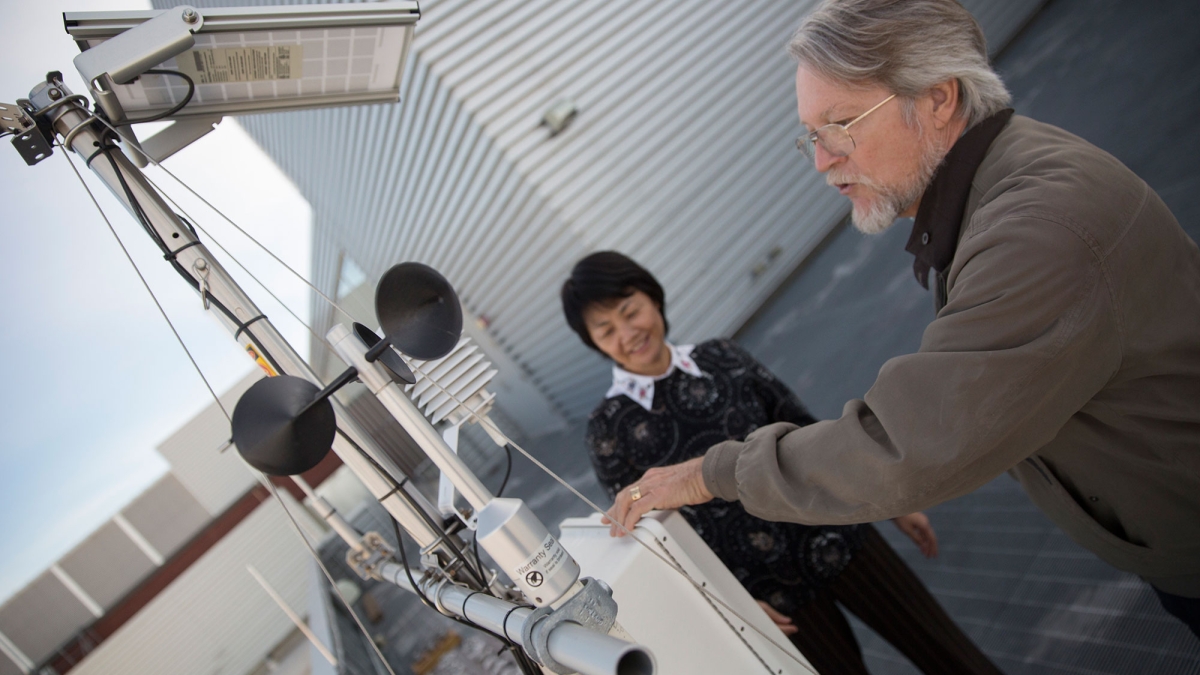ASU website provides precise snapshot of local weather, available to the public
Amateur meteorologists and researchers can access data from Tempe monitoring station

Researchers and weather-watching enthusiasts can now tap into local meteorological data gathered by the Center for Negative Carbon Emissions at Arizona State University.
The center’s team has installed a weather station atop the seven-story building where its laboratory is located on ASU’s Tempe campus.
The station is equipped with an array of sensors and other components that monitor and measure temperature, humidity, air pressure, wind speed and direction and light intensity around its location.
The data — going back to March 2016 — is updated monthly and posted on the center’s website, from which the information can also be downloaded.
“It provides a neat, precise, archived snapshot of the meteorological date for this area,” said Allen Wright (pictured above), the executive director of the center operated by the School of Sustainable Engineering and the Built Environment, one of ASU’s Ira A. Fulton Schools of Engineering.

The monitoring station atop Interdisciplinary Science and Technology Building 4 on ASU’s Tempe campus measures an array of weather conditions. Photo by Pete Zrioka/ASU
The center’s research staff uses the information to look for correlations between weather conditions and the performance efficiency of the air-capture devices in its lab.
The center focuses on developing and implementing the next generation of carbon-management technologies to help reduce the atmospheric concentrations of carbon dioxide that can negatively impact climate change and environmental health.
But Wright said the information provided by the weather station can also be helpful to other researchers doing experiments involving the effects of weather conditions on various materials, processes or systems.
The data may also be interesting to many amateur meteorologists and hobbyists who might want to compare the station’s readings with those from small home weather stations, he said.
For more information, e-mail cnce@asu.edu.
Top photo: Allen Wright (foreground) and Yun Ge check on the weather station used by researchers at ASU’s Center for Negative Carbon Emissions. Wright is the center’s executive director. Ge is a software engineer on the research team. Photo by Pete Zrioka/ASU
More Science and technology

The science behind chronic stress
Stress comes in many shapes and sizes. There’s the everyday stress of preparing for a final exam or being stuck in traffic. And the more significant stress of losing a friend, family member,…

ASU planetary scientist to be inducted into the National Academy of Sciences
The National Academy of Sciences is inducting School of Earth and Space Exploration Director Meenakshi Wadhwa into the 2023 class of new members for her pioneering work in planetary sciences and…

Unlocking the potential of AI for homeland security
“Can we do what we're doing now cheaper, more efficiently, more effectively?” Adam Cox, director in the Office of Strategy and Policy at the Department of Homeland Security Science and Technology…